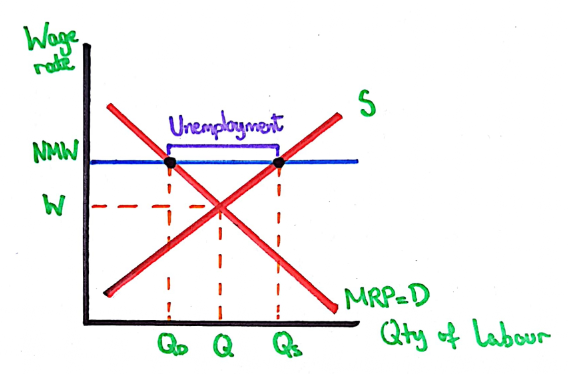One policy the government could use to reduce differences in wages is to increase the mininum wage for low earners. This is a wage below which it is illegal to hire workers at, and it must be set above the equilibrium wage rate.

The diagram above shows the minimum wage successfully raising the wage from W to NMW, which could help to reduce the pay gap for the lowest paid workers.
However, the downside with this policy is that it causes an excess supply of labour at the new wage shown by the difference between q2 and q3, and this would translate to unemployment in the real world. If some workers (women) are now unemployed, this actually increases the gender pay gap even more so this would be an ineffective policy. This is an example of government failure as there are unintended consequences - as the aim was to reduce the wage of low earners but unemployment was also caused by the government intervention.
- spending money on education and training